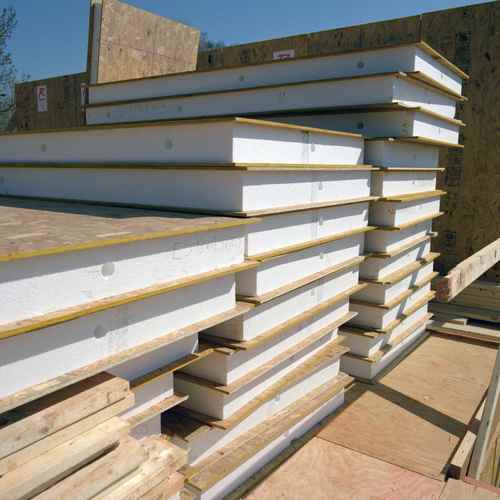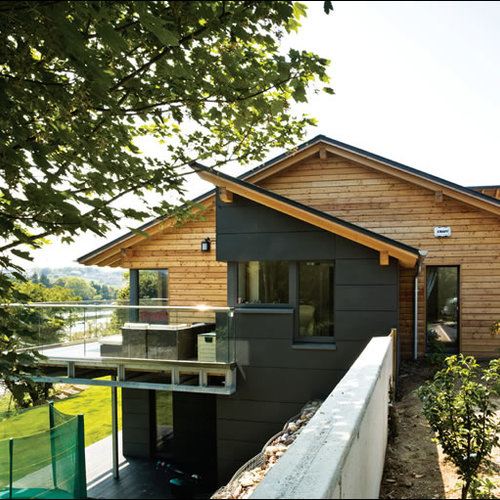In his seminal book “Cradle to Cradle,” designer William McDonough advocated that objects should be designed with the end in mind. This has been codified by the EU End-of-Life Directive, which has improved upon the traditional recycling of cars as junk, or co-mingled material. Not only does this help prevent pollution and make vehicle dismantling and recycling more environmentally-friendly, but it also provides an incentive to automobile manufacturers to reduce the use of hazardous substances, and clearly label and identify vehicle components for recovery and reuse. Producers cover the costs of collection – i.e., the last owner does NOT pay for the disposal of the car.
Imagine if this were the case in construction — even “just” in the residential industry. As with any new idea, there would be immediate pushback: “Can’t do – houses are not cars.” No, indeed, cars have to provide weather protection, lighting, heating, and cooling … within a moving object. Only mobile homes have that stringent a requirement, but the majority of housing is not so constrained.
How long should a house last?
Discussions of end-of-life disassembly bring into question the anticipated service years of a building. This is not currently a design parameter for residential builders. At one point when I was working on a life-cycle analysis problem, I contacted a bunch of production residential builders for their design service life. They hadn’t ever even posed that question. We don’t have any idea how long we anticipate the house to serve in its current configuration, nor do we prepare for eventual adaptive use.
Exterior surfaces are now considered dated after 20 years or so, and HVAC equipment wears out or becomes obsolete in around 10 years. But the end of life of the building structure can be anywhere from the mortgage life of 30 years (one would hope) to over 300 years.
One NAHB study notes that framing and structural systems were expected to “last a lifetime.” Whose? In “Designing for the Long Now,” we discussed the need for this shorter term service elements to be accessible for easy repair. The same could be said for cars. For example, spark plugs – often a $5 part with a $100 service charge for labor, because they are buried under the windshield wiper fluid tank. But I digress… or do I?
Could the wiper fluid tank have been designed in a different place? Or in buildings, could our electricity be designed to NOT be buried inside all the walls? Or the insulation co-mingled with the structure? Could the components be separated? Is there a benefit? An environmental hazard avoided – or a value gained? These are very different design criteria, and could trigger some very innovative solutions.
Designing homes for a nomadic population
The benefit is easily defined. For while we are enamored with the image of a permanent domicile, the average American will move 11.7 times during his or her lifetime. We are a nomadic population, only we don’t bring our tipis with us. Instead, we leave old behind and expect our “new” homes is to have updated technology and style.
If buildings were built with isolated components, they could be more easily refurbished. There is also a strong market demand for temporary housings – for mining or natural gas extraction sites, for Granny Pods, emergency housing for natural disasters. What if these could be sent out as a kit, assembled in a week and used for up to 5 years before they are reconditioned and re-used?
Questions of “if” can generally be resolved. If there is a will, there is a way. Already in 1908, Sears showed us how houses can be designed, shipped and built from a “kit,” the IKEA version of house building. One has only to look at the pre-assembly of roof trusses, advances in panelized construction, and the prefab home industry to see that many of the components are already in place.
But rather than prefabricating the entire home, and then shipping the assembled shell – a very expensive and unwieldy proposition – a kit can be sent out for site assembly. This would include one layer which is the “lifetime” structure, perhaps designed to look like timber framing, only built out of engineered wood. Then an envelope layer, similar to a SIPs, with cam-lock gaskets to pull it all together. These can be prefinished both on the interior and exterior, and stacked on a truck. Cabinetry can be hung on wall-mounted hardware with a posi-lock attachment; demising walls can be locked into position and pressure locked into place. Floors might be pre-finished hollow-core pre-cast. In fact, there are pioneering firms who are already exploring this concept, such as Bensonwood in New Hampshire.
Off-site manufacturing has the advantages of building in controlled environments, to tight tolerances, and gaining efficiencies of process planning. When combined with computerization and modular design, it also makes it easier to customize and allow for owners to make their own changes throughout the life of the building. But it can also address the bigger question of embodied energy, of effective use of materials, and of addressing market demand for change.
Will changes only come with new regulations?
For automobiles, it took an EU directive to push the change. This is likely to be needed in the construction industry, since the end-of-life costs are not tied to the same entity doing the new construction.
But the market forces of opportunities may continue to lead the way in developing technology, innovative builders who are pushing the envelope. Cradle to Cradle, (still) a new way of thinking.
Vera Novak writes the Eco Build Trends blog and is currently earning her PhD in Construction from Virginia Tech.
Weekly Newsletter
Get building science and energy efficiency advice, plus special offers, in your inbox.
















One Comment
Off-site manufacturing is not the answer.
It's really hard to beat a traditional site-built frame house for ease of disassembly and reuse. Dimension lumber has been standardized for generations, and an unskilled laborer can de-nail 50 or 60 studs an hour. Biggest current threat to end-of-life recycling of today's building materials: spray-foam insulation.
Log in or create an account to post a comment.
Sign up Log in